The Ministry of Defence has sought to reassure Parliament over the progress of the Type 31 frigate programme after a series of written questions by Mark Francois, Conservative MP for Rayleigh and Wickford, raised concerns about delivery confidence, costs, and complex integration risks.
Responding, Defence Minister Luke Pollard repeatedly stressed that “the Type 31 (T31) frigate programme will deliver a maritime security capability at a value for money price, in a timescale that compares favourably with other international warship procurement programmes.”
However, he acknowledged that “in common with other enterprises, the T31 programme is experiencing inflationary pressures, which are understood and remain in line with the latest plans and forecasts. The Red delivery confidence assessment rating reflects this impact and on completion of full assessment and assurance, formal updates will be provided through official channels at the appropriate time.”
On schedule, Pollard confirmed that “HMS VENTURER is the first in Class of the T31 and is currently scheduled to be in service by the end of the decade. All five of the T31 ships are planned to be in service by the early 2030s and are forecast to meet the Key User Requirements.” He noted that three ships are currently in build—“HMS VENTURER, which was floated off a launch barge in June 2025, HMS ACTIVE and HMS FORMIDABLE.”
Francois pressed the department on whether complex combat system integration posed risks to the programme. Pollard replied that “there has been substantial investment in risk mitigation. For example: significant investment in Babcock’s facilities at Rosyth, which include digitising the shipyard, new manufacturing facilities, and a new purpose-built Assembly Hall. In addition, there has been the generation of a Shore Integration facility at Portsdown Technology Park, to mitigate risks to the integration of the combat system.”
While no specific figures were provided on the scale of additional costs arising from inflation, Pollard said the department’s forecasts accounted for the pressures. The government maintains that despite the red rating, the programme remains on track to deliver its promised capability, with investment in infrastructure intended to reduce future schedule and integration risks.
The Type 31, also known as the Inspiration class, is intended to provide a versatile general-purpose frigate capability for the Royal Navy at lower cost than the more advanced Type 26.




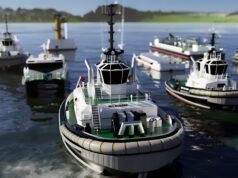
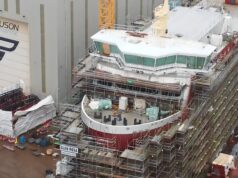

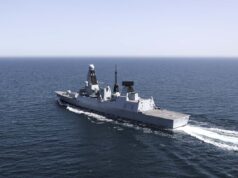

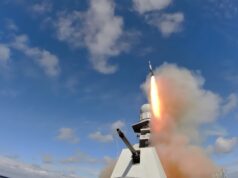
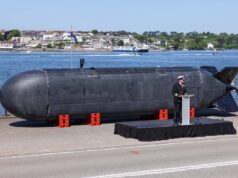
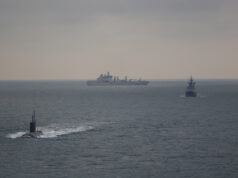
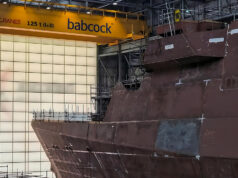

Fantastic looking ship, such smooth lines and sleek appearance, near perfect bodywork and paint job. I’m sure she’ll Impress when finally commissioned.
You can see the benefit of “Lean Crewing” too, just the 5 windows to clean.
Will we see different shades of Red to be used as program warnings now that the “Reds” are at the helm ?
Some of the PLAN future shoals look good too, and are armed to the teeth… although trashing your own Coast Guard cutter might be a sign of poor leadership that would give Allied powers an advantage in future warfare.
Maybe? Let’s not forget the many examples of Western ships smashing into one another.
Here are a few:
2021 collision between HMS Chiddingfold and HMS Penzance in Bahrain
2024 collision between HMS Chiddingfold and HMS Bangor in Bahrain
2019 sinking of HMS Helge Ingstad in Norway.
2017 collision between the USS Fitzgerald and the ACX Crystal
2017 collision between the USS John S. McCain and the Alnic MC
2021 collision between the USS Connecticut and a Chinese seamount in the South China Sea
2010 grounding of HMS Astute off the Isle of Skye
It seems a little hypocritical to label this Chinese incident as exemplary of poor leadership and potentially leading to an Allied advantage whilst neglecting to mention the countless collisions, groundings and occasional sinkings suffered by Western navies.
Weren’t the Chiddingdfold collisions/Allisions, at least the 2024 one, due to a combination of technical failure and poor reaction times in an enclosed port?
Whereas to collide with your own ship on active operations in clear water suggests a deeper lack of coordination.
Yeah, though I’d argue that failing to check for/missing a major technical malfunction prior to operation also shows a lack of coordination on the part of the RN, though not a wider issue. Especially given the same ship had been the cause of a similar accident just three years prior.
I think that commentors are very quick to attribute greater significance to these incidents when they involve Chinese vessels. For example, despite Western navies having plenty of publicised accidents, we rarely see analysts implying deep-routed failures in communication of a force-wide level, as we’ve seen suggested for the PLAN.
When an American cruiser downed a fighter jet in the Middle East during operations against the Houthi rebels in Yemen, there were few suggestions that it represented a force-wide failure in communication and coordination. There was a similar lack of wide-ranging criticism following the grounding of Astute in 2010. Instead, blame was placed predominantly on the individuals in charge of the vessels. I argue that we should do the same for the Chinese. Rather than assume this represents a force-wide failure, assume that this is an individual failure. Should repeat similar incidents occur, then we should entertain the idea of a force-wide issue. Currently however, this eagerness to suggest a deep-routed issue is symptomatic of an anti-China bias across amateur (and some professional) defence circles, in which a lack of information enables reporters with an agenda to craft their own narrative. A similar situation occurred following the alleged sinking of a Chinese nuclear submarine during construction, despite there being no evidence to support such a conclusion.
I’m not blaming any one person, though there are definitely people on this site who suffer from this.
But I thought everyone on here was an Expert and deadly serious about what they write, you mean they are not ?
Well blow me down with a feather.
You’re a special case lol.
Oh bless, I like being Special.
are RN ships still built strengthened to allow for ramming. Seem to remember it being something to do with the Cod Wars???
Yes, that was when HMS Haddock got heavily Battered.
🤡
HNoMS Helge Ingstad
Both are right. The Norwegian Navy uses a translation of the HMS prefix, so it’s perfectly fine to call it the HMS Helge Ingstad. It’s still ‘His Majesty’s Ship’, even if it’s referring to a different monarch.
It depends whose side you’re on, and whether you want to give “aid and comfort to the enemy”.
yes no doubt the NAO will be along shortly to provide us with its coveted Red Warning before downgrading it to green five years after the ships first enters service.
It’s going to be grossly under-armed if the Mk-41 silos aren’t fitted at inception. I don’t understand why they don’t make it a priority to fit the silos during build.
@NickB
The reasoning is pretty clear to get #1 into trials ASAP and hopefully accepted into the fleet.
Anything that slows that process down is bad for the program as well as exports.
I suspect we will see #2 or 3 onwards fitted with Mk41 and NSM from the off.
No chance of Mk41.
Mk41 suits the increasing lethality gibberish as well as actually having a useful military function.
So I do expect Mk41 to be fitted at the first insertion period which will probably be as soon as the first 3 are active.
Hi SB,
I read sometime ago that Babcock were dead against any change to the current contract, hence the Capability Insertion Program (CIP) contract that they signed with the MoD which I believe covers all 5 ships, so I think they will push the ships through to completion ASAP.
At the time I wondered why they did that as it would have been a clear opportunity to renegotiate the existing contract and perhaps claw back some of the £90m program loss that was being forecast at the time. Given the recent announcements I now wonder whether their resistance to changing the RN spec and contract is because any delay would have clogged up their production line in which they have invested heavily and need to keep busy for years if it is to pay for itself and RN T31 program alone would not have been enough. My guess is that they may well have known that they were in line to build 3 or 4 corvettes for the Swedish navy as they are now in a partnership with SAAB in which Babcock build the ships and SAAB fit them out. I recon that they had sufficient confidence in their developing order book such that they did not want their ship building capacity blocked by delayed RN T31 so they dug their heals in about changing the contract. Winning the CIP means they will be able to keep their fit / refit people busy while the heavy engineering side of the yard is kept busy with building hulls for Sweden and perhaps Denmark. (Not forgetting that Queen Elizabeth is due for a refit as well!)
It would also have been in the RN / MoD best interest to get the T31 into service as early as possible given the condition and run down of the T23 frigates.
If Babcock can win the frigate order from Sweden as well their strategy (whatever it really was) will have paid off handsomely. Personally, I think they have played a blinder and in the medium term their stand may well demonstrate how contractual stability can pay dividends for both parties to a contract. Lets hope MoD can learn the lessons…
Cheers CR
The current contract is fixed price and heavily weighted toward the MoD. Babcock’s would love to open it up and renegotiate. The MoD would be utter idiots to do so.
But then again, the MoD has a track record of doing utterly idiotic things.
If Babcock deliver as promised a good warship to spec and budget what is not to like. .
This will stop one of the favourite records sung by TreasuryMan[TM] what is on endless repeat – the chorus to all the stanzas is ‘no ship is ever delivered to budget or time’
Honestly it is a major issue if RN can be all grown up and get stuff done for the original prices they gain huge amounts of kudos
Something really odd has happened with the formatting here…. u
CR,
Concur that completion of significant number of large, modular hulls is paramount. Mods of sensors, weaps., etc., are inevitable over class lifetime. T-23s of 2025 bear little resemblance to the class when first commissioned. Anticipate continual mod programmes for all warships in the future as technology accelerates.
Priority 1 was to get the ship built launched and commissioned, it’s worth remembering this is the first in class, that means this ship is going to spend a lot of time in first of class trials. Essentially the first in class will spend a year or so being poked and prodded…then get sent back to the yard for rectification work before finally being made operational 18 months to 2 years after commissioning.
So essentially wasting time in reworking to get MK41 launchers inplace on commissioning essential would be counterproductive as it delays first in class trials..and this is an important part of the whole build process, because it finds the issues for the later ships before they are commissioned.
Personally I would go for numbers over everything else, because it’s lack of numbers that kills a navy, without numbers you cannot deploy and if you cannot deploy you cannot practice and if you cannot practice you have poor quality crews and less of them… which mean you cannot deploy and so on leading to a death cycle, a cycle you can see presently in the RN… i paraphrase a bit but as one U.S. admiral put it “quantity is the foundation of quality in any navy”.
It’s a little known fact that the RN of the 19c generally had inferior ships, we were simply not as good at building warships as the French and RN captains were always happy to command a captured french build warship as they were on the whole faster more agile and generally made of higher quality materials. But it was the RN that had far the better navy and that was because of size and therefore practice.
Naval and maritime supremacy has always been a game of numbers, you don’t need the best ships, you need the most ships. Pretty much every naval conflict in history has been won by the navy with super numbers.. and the most powerful ships on the planet hunted and destroyed by numbers.
“Naval and maritime supremacy has always been a game of numbers, you don’t need the best ships, you need the most ships”
This is absolute rubbish. Naval battles have historically been won by the side that has the best captains, weapons and ships crew. Like a lot of the verbal diarrhea that infest your posts, a dose of facts would improve matters
Sorry no it’s numbers that matter this comes directly form a piece from the US navel war college. Of the last 30 maritime and naval wars and campaigns the navy with the largest numbers won 27 out of 30. If you have the smaller navy you almost invariably loss.
As for diarrhoea.. I actually read seminal articles and academic papers, not just insult people..maybe you should try the same..instead of just vomiting insults.
As for the best captains and crews.. they come from large navies.. because large navies have lots of experience to draw on..see experience and ships crews don’t come out of thin air… they come out of lots of sea time and lots lots of very experienced people with sea time teaching you.MASS creates QUALITY.
So stop taking rubbish and educate your self.
A little learning is a dangerous thing.
All learning is a good thing.. only ignorance is darkness 😂🤣😀
Hi Jonathan Quite an interesting observation regarding the Napoleonic Naval balance of power, you are quite right regarding the French Warships generally they were better built, but a lot of that had to do with materials and necessity ! For instance we had far more access to quality Oak and Eastern hardwoods which meant they built lighter but stronger by using techniques such as iron knees and reinforcing fish plates.
However they also tended to build larger ships with more numerous guns, which meant slower and less manoeuvrable ships, the majority of RN ships were 74 / 64 gun with a smattering of 100 + gun (like Victory) ships of the line, our crews and commanders learnt how to use that to their tactical advantage,
The other primary difference was in gunnery practice the RN generally had fewer but larger cannons and better trained gun crews, the Carron Ironworks at Falkirk produced both Carrions and Carronades both were superior to the French and Spanish weapons.
As for the argument about numbers mass has a quality of its own and if the WW1/2, IJN WW2, Italy WW2 for examples, there has to be a huge disparity in quality or ineptitude for the opposite to occur.
It’s interesting because in the end even a navy becomes expert in fighting mass with quality and has the mass of its own to maintain quality it will still in the end fall to quantity if the enemy is willing to push.
Probably the best example of this in the late modern age is the imperial Japanese navy. Now here you have a large navy that could maintain quality, was highly innovative and profoundly aggressive. It was one of the few navies that have been able to beat a larger navy as it wasn’table to leaver local superiority and during the sino russian war and was able to defeat in detail the local forces then allowed the tyranny of distance to help defeat the rest of the Russian navy in detail. It then went on to further success. But during WW2 when faced with overwhelming numbers from an enemy that would not give up and was willing to bury it in numbers it lost.. even though it had high quality sailors, innovative technology, the two largest and most powerful battleships ever built and the most aggressive paradigm.
Because changes to the contract requirements is how slippage in dates and costs always occurs. It starts with just a little change here, and just a little change there. However, I haven’t heard that the Mk41s have even been ordered yet. If a capability insertion plan is to start soon after commissioning, I’d have hoped we’d have heard something by now.
To be honest I do wonder if they are having a bit of a rethink around the MK 41s, because in the end what they need to do most is up the number of CAMMs and also give it some strike and ASuW capabilities. They can do that a lot more cheaply by just dropping in 4 more standard CAMM farms to give 36 CAMM and due to the speed of the T23s falling apart that are going to have five spanking brand new sets of 8 NSM launchers with no ships to go on that will essentially be free. So I suspect the capacity upgrade may well be more CAMM farms and 8 NSM.
Because quite frankly with its very good gun armament and ability to take a Merlin that would be a pretty good fit for a second rank GP frigate and make them more capable than a lot of frigates.
I have to disagree to be honest. with the plan for T-31 to be forward deployed as a GP Frigate, It must have the capability to defend itself and conduct limited strikes in a medium threat enviroment, like the Red Sea for example.
With 36 CAMM and 8 NSM, additional to its gun based armaments, It’ll run into the exact same problem that the T-23 faced. In that it simply cannot operate to support the protection of civilian shipping without help. Yes it can defend itself from Cheap drones and some dedicated Anti-Ship missiles, but if we find ourselves in a similar situation as we did last year where Ballistic missiles were getting lauched, then its useless. NSM is also very limited in its land strike capability, I am not actually sure it can be realisticly be used as land strike by T-31 given the missiles modest range.
Mk.41 not only gives T-31 a similar capability to other Teir 2 frigates being aquired by western navies, examples being Aussie Mogami and US Constellation (which may end up with more than 32 ), it also future proofs the ships for munitions like CAMM-ER and CAMM-MR to give them added AAW capability. Not to mention the FC/ASW, a dedicated Land Stike (TP15) and Anti Ship (RJ10).
In regards to its ASW capability, they desperatly need a towed array, they can get away without a hull mounted sonar but I do not see how they can be expected to operate anywhere in the world without atleast a towed array sonar. Merlin is great, but we cannot pretend a ASW helo can protect it’s ship 24/7.
The Mk41 VLS can take all sorts of missiles, from tomahawks to torpedoes and anti-ballistic missiles. CAMM is just air defence with maybe a minor anti surface capability as far as I am aware. The Type 31 is not an air defence frigate, it is general purpose, so why does it need all the missiles to be AA ones?
Hi John in the end the most numerical threat is from the air and it would have NSM for long range strike.. so at the moment every missile the RN has that it could put not the T31 does not go in or need a MK 41 launcher. Essentially it’s a lot of money for essentially silos that the navy has only CAMM or NSM to fill, fitting 32 Mk 41silos to each of the 5 T31s would cost around 250- 300 million pounds before you fit them and put any missiles in it.. that is a whole extra T31. Where as adding an extra 12 -24 CAMM from decommissioned T23 and the NSMs is cheap as chips.
In the end the question is what extra missiles will the T31 get if it has MK41s and at what sacrifice.. yes if the RN had 32 escorts on order and it had the cash to buy a load of tomahawks and integrate Aster 30 into the T31 then hell yes get 32 Mk 41 launches.. stick 32 CAMM, 8 Aster 30s and 16 tomahawk in those silos… but the RN only has 13 frigates on order and only has CAMM to fit in those MK41 silos. So not totally sure it’s worth it.
T31 was always slated to take NSM
The Mk41 issue is more about
– the other flavours of CAMM ER/MR etc and what they go into
– the Anglo/French ASM/Land Attack weapons and what they go into
I don’t see £250-300m as a lot of money to deliver an awful lot of punch. So this fits with the multiply lethality warbles which are the warbles of the month.
We will be buying the Anglo/French missiles for sure. ATM they can likely only go into T26 Mk41 and being French probably the A30 VLS. There is nothing about them being canister launched.
If you spent £250m on anything else would it actually have the same multiplier effect: I doubt it. It is also about adaptability of T31 to act in concert with other platforms depending on what is put into the VLS. And T31 is the *now* platform in build otherwise it is another outing for the jam tomorrow brigade. There comes a point where thinking needs to be crystallised into action as you cannot fight a battle purely with PowerPoints and Spreadsheets – weapons are needed on platforms that actually exist.
The thing with a VLS system is flexibility as well as Mk41 already being TACTICOS integrated.
Indeed that is true. To be honest what I am thinking is the RN has always operated with a number of patrol type frigates for presence and cruising type operations and in reality you don’t need a truly punchy platform for that.
I think the Rivers 2s are far too exposed and under armed for their present tasking, which is essentially a patrol frigate type role. Maybe the first few T31s just need to be that traditional low end/second rate patrol frigate 24-36 CAMM with the gun armament means they can take care of themselves against anything other than overwhelming attack or act as a goalkeeper or outer AAW screen as part of a CBG, NSM gives it a strike intervention package against anything other than a full on peer and very potent ASuW punch. Say the first 3 type 31s with this configuration that would essentially allow the RN to forward base 1-2 Patrol T31s in the Indian Ocean and pacific.
The rivers 2 can them come home and be used for North Sea patrol work and to cart around the mine warfare capabilities ( they are really spot on for the mine warfare capability, they can take the shipping container control room, space for the SEA boats and a nice crane)
Post hull 3 think the Danish contract would give the RN an opportunity, because the danish navy is going to order a more capable AAW version that can take its stocks of ESSM and SM2 missiles.. so this means a good radar and MK41s. Essentially the RN and Danish navy could order the same upgraded T31 at about the time as hull 3 onward will be in service the RN will be getting missiles that are actually worth putting into a MK41 launcher.
Personally I just think the priority for the RN should be ensuring its world wide Geostrategic role with a good forward based patrol frigate, removing the Rivers 2 from the Geostrategic bind of needing to be there but being in the shit if something happened as well as strengthen the security of the North Sea with the return of the Rivers 2 which are very good patrol boats for the North Sea and EEZ.
That then frees up the first line escorts for the CBG and littoral groups.. if they then produce further T31s as very competent ASuW/AAW frigates with a better radar and MK41 silos it could work well…
Im just not sure about rushing to stick MK 41 silos in the first few T31s when I’m not sure the future cruise missile/anti ship missiles will be operational before 30-35 and in serious numbers until 2040.
At present the RN needs to be laser focused on numbers of escorts.. because if it cannot maintain numbers and deployments it will be in the shit and in a cycle of entropy.. less ships and deployments = less quality crews = less ability to crew ships = less deployments = less quantity crews…….
I didn’t know there was official confirmation of NSM on T31, much less the ship having been always slated for it. It’s true the press and the commentariat have always assumed it will get it, because it makes so much sense, but I don’t recall the Navy or the MOD announcing it. Can you recall where you heard it was going to get it? Was it an official announcement?
There is a promised capability upgrade as soon as sea trials are done.
But given the MODs current reputation for glacial procurement, that could be 10 years down the road.
I suspect that the capability upgrade may just be to a realistic second rank GP frigate level.. 24-36 CAMM in a standard farm and 8 NSM.. because that could be done cheap as chips ( the RN already has the CAMM missiles and NSMs and launchers)… the fact the type 23s are falling apart faster than you can say “whoops” means there is a lot of spare already paid for kit.
The MK41s would be lovely but quite frankly a bit gold plated and at present the RN does not have the missiles for them… give it a good number of CAMM and NSM and jobs a good one.
Quite agree with you.
Like when hood,kgv, Nelson and all the other were launched with no weapons…. Normal practice.
‘value for money’ = skimping on capabilities = a floating liability in contested waters = death trap. Value for money / cheap shouldn’t mean giving them limited ASW capabilities and arming like a corvette.
It is very hard to understand this announcement as it makes no direct mention of the successful systems integration validation announced a few days ago.
Whilst I’m very grateful to @George [and team] for researching this material and publishing it might, I suggest, be good for an SME to deal with a particular platform so that articles can be cross referenced?
It would be really handy to insert links to previous announcements and possibly have a sub menu for say T31, T45 etc so it is a bit easier to comb through the history of a platform?
All the great issues of a growing platform and readership as defence, thankfully, rises in the national ajenda.
💯
This is a great idea.
I have a further suggestion, in that perhaps these smaller articles could be placed into a kind of live feed for each subtopic, where the user could scroll through articles and posts. It might save time as opposed to writing a whole article for these more minor developments.
A sort of Wiki style summary article?
Once the template is established pasting the info in should be relatively straightforward.
Hi SB, I’m not entirely sure how anyone can do a proper assessment of the T31 yet as it’s an unknown quantity, it’s really a different ball game with lots of equipment that is new to the RN. In fact I will be very intrigued to see how the T45/26 BAe ships integrate with the T31 Thales ones.
As for a summary I think Navy Lookout are pretty well the go to SME for this sort of thing or even Jane’s. t
“HMS VENTURER is the first in Class of the T31 and is currently scheduled to be in service by the end of the decade”
Say, what?! Nick Hine said when the ship was rolled out in May that he expected it to be handed over to the Navy at about the same time next year. I’ve read articles saying sea trials will begin by the end of this year. Last month Naval News declared commissioning was expected in late 2026 or early 2027. Now Pollard is saying it will be in service by the end of the decade! What is going on? The difference between these statements is why people need reassurance, and Pollard’s statement offers none of it.
With possible export orders for Denmark and Sweden on the line, spamming random dates is unhelpful. At the moment “on schedule” is any date you like.
Will Babcock and MOD please agree a schedule and publish it?
I assume the discrepancy comes from the date the ship will be handed over to the RN for sea trials as first of class, and the date of her actual entry into service which is likely to be at least a year and likely more on from that
I agree. But these are simple ships, especially as initially outfitted. It shouldn’t take until the end of the decade before they are brought into service. 2028 was the operational target date for quite some time, and I’d have thought that was still eminently reachable if the ship is handed over mid-2026.
I suppose I should have said congratulations to Luke Pollard on his elevation to Minister of State, and I hope his written answers are better than this in his new job. Also welcome to Louise Sandher-Jones, taking Pollard’s old job.
What people often forget is commissioned is not operational.. especially for the first in class you are looking at 18 months to 2 years after commissioning before a ship is operational.
First in class trials will take a year as the RN tests everything and writes the how to operate manual, they will also create a massive long this does not work list.. some will be fixed by Babcock staff who will still be on board as part of sea trials and some will be fixed when the ship goes in for post trials remediation work ( which any first in class will have in spades).. after that back out and work up for first operational deployment.
This is the big issue with the T23s falling apart so quickly.. when you look at the planned commissioning dates for the T31s and T26s add 2 years before the first in class is operational and 1 year before all the subsequent ships are operational.
All a bit like HMS Prince of Wales at the Denmark Strait, Handed over and Commissioned and yet still working up with Vickers engineers on board fixing the 14″ Guns! Very much part of the fleet though. Amazing she did so well and scoring a vital hit. Not first of class.
Before it enters service there have to be trials, meetings, more trials, meetings and the there is armament to be discussed and the fitting thereof postponed. The price of each ship will have doubled so build will need to be slowed which will need meetings…….
we’re in 2025 now so the end of the decade is only 5 years away, so the first Type 31 should be in service with the RN in 2030 (The end of the decade)
If they ever make a live action Family Guy film there will be a point to Mark Francois. Until then, there isn’t.
Next decade??😳
I kept reading 2027.
5 years to trial a ship?
I thought she was fitting out already?
You can add 2 years to the commissioning date of a first in class before its operational ( with -/+ six months). The first in class sea trials will be about a year.. then it goes back into refit for remedial work then it’s back out for work up to first deployment.
Couple of examples:
HMS Norfolk was commissioned 1 June 1990, it finished trials and completed its BOST in December 1991 after its BOST the crew got to play in Exercise joint warrior as a treat for all their hard work, before the ship was taken in for its defect rectification period, it was then formally deployed in May 1992.. so almost 2 years to the day before its first deployment.
HMS daring.. handed to the RN on December 2008 but not formally commissioned until July 2009, She did her BOST in June 2010 and was declared operational in July 2010.. which was actually utter BS in the case of Daring because she had no functioning weapon systems apart from her 4.5in gun and 30mms at that point. She then went back into trails ( even though she was formally commissioned..I actually don’t understand how she past her BOST to be honest because part of the BOST is testing systems are functional). After 2 years of trials she had a working sea viper system and CIWs and went on her first operation deployment in January 2012 just over 3 years after being handed over.
This delay between being handed over and commissioned and actually being operationally deployable is one of the big concerns around the rooting type 23s and why I always estimate very low numbers on the RN major surface combatant fleet from 2028-2033.. because commissioned is not operational.
Thanks, J.
I’d forgotten the furore in the press about Daring.
The 1 billion ship armed with a Main Gun.
Cameron, Clegg, and whoever was Chancellor and DS need hauling in for an in camera enquiry. I’d bring the 1SL too but he’s probably enjoying his pension with feet up.
Our Escort numbers are dropping away.
She is fitting out, but you have all the installation of kit, followed by setting it to work. This all takes time, particularly for the first of class. Then you have to trial everything, one system at a time, that will take most of next summer, then hand over to the RN, who will then check everything. It won’t work straight out of the box, the last big system that did that was the Horizon system for the Post Office, and we all know how well that went. Then you will almost certainly need a period back in dockyard hands for remedial tweaks and changes. All that will take her well into 2027, then you have work up, which again will be protracted because everyone will be learning on the first of class. By the time ship 5 comes along it will be an almost easy!
Thanks Nick.
Pretty much as J explained above. 👍
Probably typed at much the same time as well!!
Seeing the Type 31’s can’t actually do much and the little it can do is well proven in service elsewhere, testing should be a breeze.
So the first type 31 will be rushed through in this time of Global uncertainty in about another 5 years….